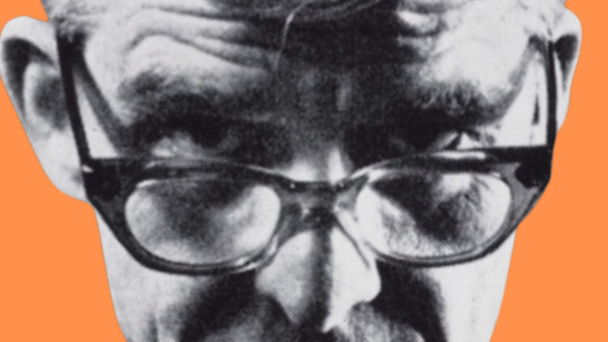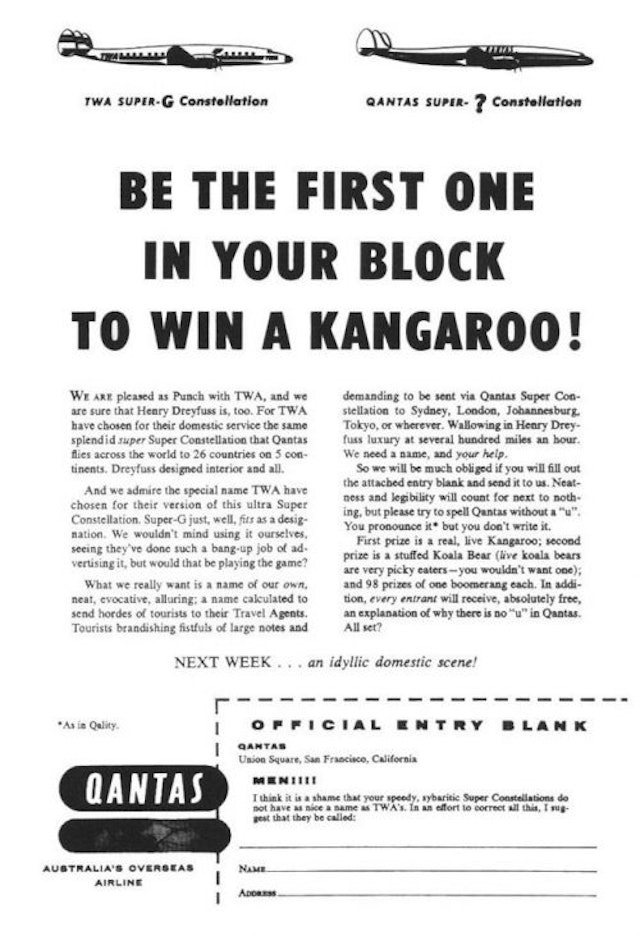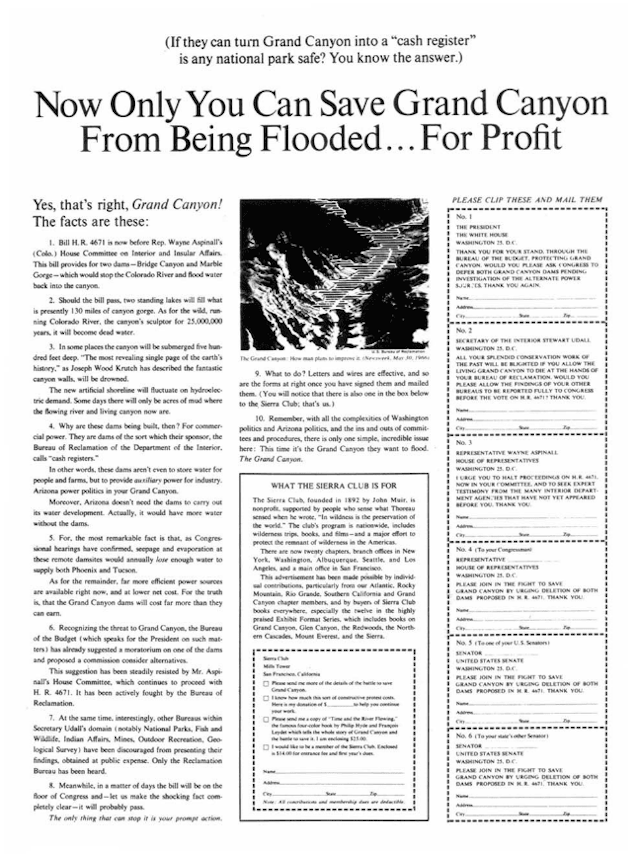Activists need to be more like Howard Gossage and less like Just Stop Oil
Ashley Pollak, co-founder of Tediophobes, explains why sustainability activists must learn from the greats like Howard Gossage to have more impact.

“What you’ve got to do is to give people recourse. You’ve got to give them something they can do, so they don’t feel guilty and therefore hate you for making them feel guilty.” – Howard Luck Gossage, 1966
Driving past the Pasha nightclub’s iconic cherries, smeared in slick black paint by climate change activists, I grappled with mixed emotions. To me, the music culture of Ibiza represents the joy, escape and unabashed hedonism that has come to define the island’s spirit. As a resident, my connection with this island goes much deeper. Living here is about living small and thinking big.
The actions of Extinction Rebellion were meant to draw attention to the incompatibility of this decadent lifestyle with the climate crisis. Instead, I felt disconnected and alienated from an environmental movement that I know is essential to save ourselves and our planet – one that we all need to become a part of and actively engage with.
Advertisement
It’s complex selling to people today. Audiences have become far more sophisticated. Media channels are more fragmented. And if you start the funnel badly, you’re screwed. You’ll lose your audience before you’ve even got going. Throwing media spend at the problem isn’t the answer either. As a wise man once said, advertising can be like a “multi-billion-dollar sledgehammer hitting an economy-size thumbtack.” Sure, when you’ve seen the ad for the 100th time, you'll remember it. But is that the same as being inspired to take the next step?
And so to the topic at hand: Saving the World.
The climate debate has been ticking along since the 1960s – and the trickle is now a torrent, with no ignoring that radical change is happening to our planet. We’ve followed the guidance on our recycling bins and changed our light bulbs; but it’s not making the difference required. And into the void of our apathy, Extinction Rebellion & Just Stop Oil have stepped in to take radically direct disruptive action, trying to shake us to our senses.
As Louis McKechnie from Just Stop Oil said when he glued himself to a Van Gogh painting: “We’ve tried everything else.” The strategy to tackle the grand challenge we all face is deliberate disobedience to deface public paintings, luxury yachts, and private jets. To make as much noise as possible. To generate press – good or bad.
While respected voices in political and environmental activism, such as George Monbiot, believe that: “History will vindicate the people putting their liberty on the line to try to stop the collapse of our life support systems”, the reaction from the public at large has not been quite so positive so far...
Advertisement
As someone caught up in a protest said: “They may be trying to get people to think about the issues but all they end up doing is getting people really annoyed and angry.” In activist circles, their actions have been described as unrealistic and naive in pursuing the change they seek the government to make.
The problem is one of guilt. Because 'the sell’ we want is a movement of drastic change. To get society on board, both from the top down and the bottom up. To create a groundswell of momentum that motivates changes in policy at both a national and international level. Transforming the day-to-day actions of individuals, which, when combined globally, will make a significant impact.
We have a tendency as a society to look to the future for solutions, but in this case I’d like to take a different path. I’d like to gaze back at a small converted Firehouse in San Francisco in the mid-1960s, and an iconoclastic ad man known as the ‘Socrates of San Francisco’: Howard Luck Gossage. Gossage knew guilt was useless in converting people to a cause. What you needed to do was make them feel that they could personally make a difference – to get them involved in change.
In May 1966, David Brower, the Sierra Club executive director, walked into the firehouse office of Howard Gossage. He had written a Hail-Mary piece about the government’s plan to build a hydroelectric dam in the Colorado River – a construction project that would flood a 140-mile gorge in the Grand Canyon. He was looking for Howard’s team to help design the ad.
By the time Brower called in at the firehouse, the plan was a done deal. The Kennedy Administration had approved it. Bulldozers were rolling, scaffolding was raised, and drilling had begun. Brower knew at this point that his campaigning efforts had failed. He said: “We’ve got to do something different.”
Suggested newsletters for you
Howard has made his name in the industry by creating eccentric, interactive advertising campaigns that involved balloons filled with pink air, live kangaroo giveaways, international paper airplane competitions and Beethoven sweatshirts. Each campaign was written in a casual, conversational style – always inviting the reader to take part in the activity, to be involved in the fun. He felt that Brower’s campaign needed an interactive element, a call-to-arms, to actively engage with the reader and get them to feel they could actually do something about the issue. They could personally help save the Grand Canyon from being flooded.

Howard’s solution was to incorporate a series of coupons into the ad, each opposing the construction project, that the reader could cut out and mail off to a selection of their elected representatives: one coupon was addressed to the President of the United States, another to the secretary of the interior, and others to the head of the interior committee of the House of Representatives, the reader’s congressman, and their two state senators.
The coupon campaign was so successful that in a matter of weeks the public outcry had reached Congress, and the dam project was promptly scrapped – effectively saving the Grand Canyon from being flooded. This single advertisement kickstarted the modern environmentalist movement in America, with Brower and Gossage’s collaboration ultimately resulting in the founding of ‘Friends of the Earth.’

So today.
The same idea would not have the same level of impact. We’ve all become desensitized to a change.org petition. Back in the 1960s, it required you to actually get a pair of scissors, cut out the coupons, put them in envelopes, stamp them, and walk them to the mailbox. The reader felt like an active participant in the process. They felt invested. Signing a web form with a click of a button doesn’t have quite the same effect.
The solution I’m calling for is more nuance. To be more strategic and creative in the environmental call to arms. For quality over quantity. Creativity over chaos. Innovation over irritation. In order for people to feel invested in the process and able to enact positive change – rather than just hopeless, alienated, disenfranchised and guilty.
I see steps in the right direction. With COP 28 taking place this week, the timing and concept of the Oblivia Coalmine ad by Richard Curtis/Lucky Generals is spot on. Its combination of Olivia Coleman’s performance (and character name) combined with the call to action - check where your pension fund is investing - is what we need more of.
Also this week, former world leaders, led by Gordon Brown, wrote a letter to COP and the G20 seeking a $25bn levy on oil states to offset the damage of fossil fuels. Instead of making the leaders of these nations feel merely guilty for their actions in extracting oil (which any of us driving a car and flying are complicit in), the letter calls for taking the windfall profits of oil and depositing them into a loss and damage fund. To “kickstart a programme of investment" in poorer countries. These are practical, tangible steps that everyone can understand and feel a part of.
Back to Ibiza. Last weekend, I attended an event at Juntos Farm, a regenerative farm based on the island. Founded by Christian Jochnick and Sophie Daunais in 2018, Juntos Farm aims to offer Ibiza residents easy, affordable access to locally-grown produce and farm boxes that help reduce their reliance on imported goods and drastically lower their carbon footprint.
With food production contributing 37% of global emissions, Jochnick’s belief is that we need to shift our behavior with the three meals we eat a day. As he said: “Every single purchase can be an act of activism.”
Juntos Farm runs various programs and activities – educational workshops, farmers markets and tasting events – that help explain and actively involve people in regenerative agriculture. Given the choice, Jochnick believes customers will always choose the sustainable option. It just needs to be presented to them in an appealing and interactive manner, giving them a tangible sense of positive recourse, just like Gossage’s coupons offered with the Grand Canyon campaign.
Ashley Pollak is the co-founder of Tediophobes. His BBC Radio 4 documentary about the Socrates of San Francisco is available now on BBC Sounds. He’ll be debating the topic of this article on a Linkedin live audio event December 14.

